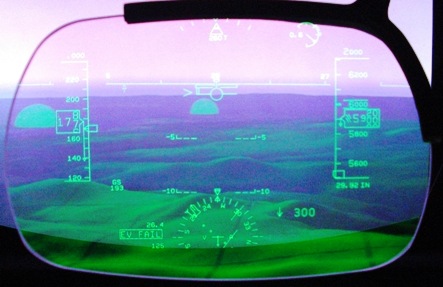A pair of synthetic vision-equipped Rockwell Collins HGS-6000 series head-up guidance systems the US Federal Aviation Administration (FAA) has purchased for its Boeing 737 simulator in Oklahoma City will be used in part by the agency to evaluate synthetic vision for lower instrument landing minimums.
Rockwell Collins recently submitted an application to the FAA for a proof-of-concept study to evaluate its head-up guidance system (HGS) for landing "credit". The application follows several years of study by an RTCA committee that has been developing equipment and operations specifications to allow for a 50ft (15m) or more reduction in category 1 approach minimum altitudes to 150ft or less from the standard 200ft, for straight-in approaches for aircraft equipped with approved synthetic vision systems (SVS).
Along with business and general aviation operators, regional air carriers equipped with SVS in particular would benefit from the credit given the lack of higher precision category 2 and 3 instrument landing systems at the airports they often serve.
Debate is ongoing as to whether a head-up display would be required for the credit. Rockwell Collins, provider of the industry's first certified synthetic vision-equipped head-up display (HUD), favours the HUD approach, while competitor Honeywell and others argue that head-down displays (HDDs) provide similar pilot performance and safety to a HUD.
 |
|---|
| ©JOHN CROFT |
| Rockwell Collins synthetic vision on a head-up display |
The FAA, which will ultimately decide on the amount of credit, equipage and training, wants more proof that reduction in minimums will not erode safety. "Many in the aviation community agree that there is a benefit beyond situational awareness for SVS during the approach if its use helps the pilot to complete the approach," Trent Prange, the FAA representative to RTCA special committee 213, said during a February meeting of the group. "Today there is yet to be any data to prove this."
Along with enhanced and synthetic vision inputs, the HGS-6000s, which were installed in March, were upgraded with category 3 instrument landing system (50ft minimums) software that includes monitoring for approach and flare guidance cues in the pitch and roll axes, as well as monitoring for roll-out guidance. As such, the FAA plans to use the HUDs to train its inspectors for category 3 instrument landings and to study the potential applications for flight decks with dual HUDs as part of next generation air transportation system (NextGen) efforts.
Source: Air Transport Intelligence news























